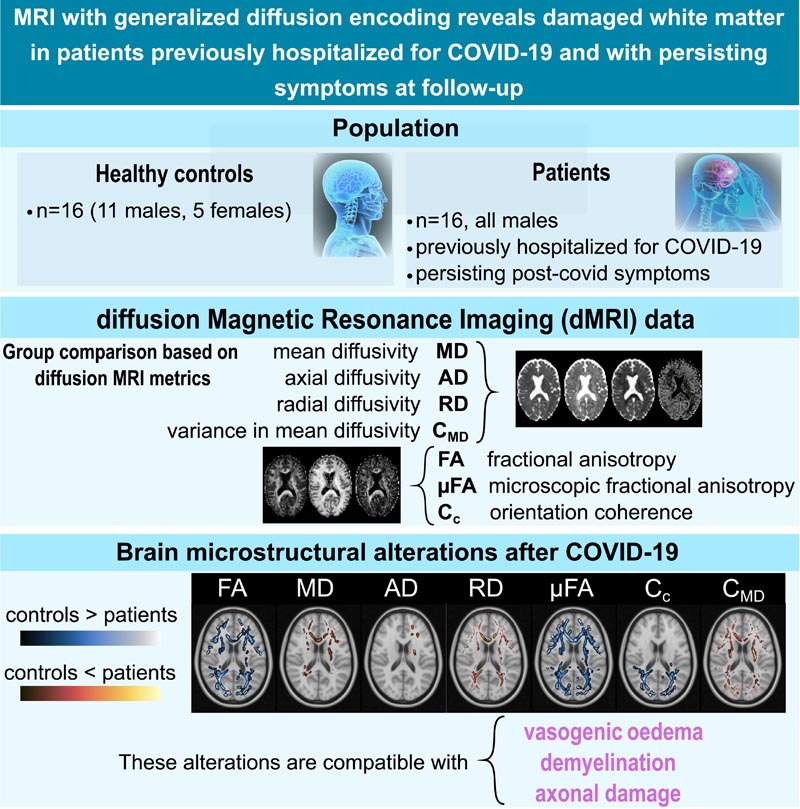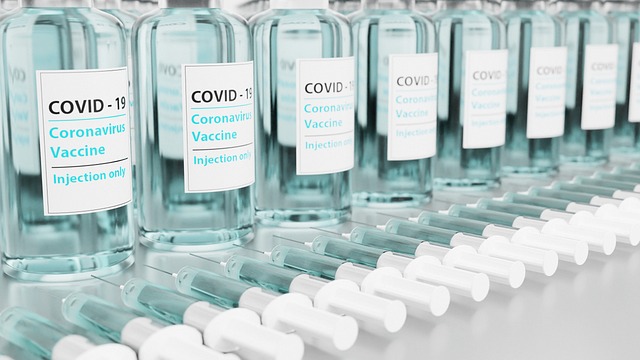Researchers at Linköping University, Sweden, have examined the brains of 16 patients previously hospitalized for COVID-19 with persistent symptoms. They have found differences in the structure of brain tissue between patients with persistent symptoms after COVID-19 and healthy people. Their findings, published in the journal Brain Communications , may provide insight into the underlying mechanisms of persistent neurological problems after COVID-19.
Several previous studies on lingering problems after COVID have involved MRI brain scans. Although researchers have found differences compared to healthy brains, these differences are not specific to COVID-19.

“It can be frustrating for me as a doctor when I understand that patients are having problems, but I can’t find an explanation because there is nothing on the MRI to explain it. For me, this underlines the importance of trying other examination technologies to understand what is happening in the brains of patients with persistent symptoms after COVID-19,” says Ida Blystad, neuroradiologist at the Department of Radiology at Linköping University Hospital. researcher affiliated with the Department of Health, Medicine and Care Sciences at Linköping University and the Center for Medical Image Science and Visualization (CMIV).
Therefore, in their current study, the researchers have added a new type of MRI called advanced diffusion MRI . They were particularly interested in the white matter of the brain. This is made up mainly of nerve axons and is very important for transporting signals between different parts of the brain and the rest of the body.
“Diffusion magnetic resonance imaging is a very sensitive technology that allows us to detect changes in the organization of nerve axons. This is one of the reasons why we wanted to use diffusion MRI to study the effects of COVID-19 on the brain that other imaging technologies might not detect,” says Deneb Boito, a doctoral student in the Department of Engineering Biomedical at Linköping University.
To get an idea of what diffusion MRI is, we can imagine a large city at night. Car headlights and taillights shine like strings of red and white pearls on busy roads. We cannot see the road itself, but we understand that it is there, since cars can easily drive along it. Similarly, doctors and researchers can gain insight into how the brain is built at a microscopic level using diffusion MRI. This technology is based on the fact that there is water everywhere in the brain that moves in the tissue according to the law of least resistance. Water molecules move more easily along neuronal pathways. By measuring the movement of water molecules through neural pathways, researchers can indirectly infer the structure of neural pathways, just as we can indirectly understand that there is a highway with many cars driving on it.
Healthcare uses of diffusion MRI include diagnosing stroke and planning brain surgery. In their current study, the researchers used a more advanced version of diffusion MRI. They examined 16 men who had been hospitalized for severe COVID-19 and are participating in the Linköping COVID-19 Study (LinCos) at the Linköping Department of Rehabilitation Medicine. They still had persistent symptoms after seven months . This group was compared to a group of healthy individuals without post-COVID symptoms who had not been hospitalized for COVID. The participants’ brains were examined with both conventional MRI and diffusion MRI.
“The two groups differ when it comes to the structure of the white matter of the brain. This may be one of the causes of the neurological problems experienced by the group who had suffered severe illness from COVID-19. It is a result that agrees with other studies that have shown changes in the white matter of the brain. However, having examined only a small group of patients, we are cautious about drawing any major conclusions. With this technology we do not measure the function of the brain, but rather its microstructure . To me, these findings are a sign that we need to investigate the long-term effects of COVID-19 on the brain using MRI technology that is more advanced than conventional MRI,” says Ida Blystad.
There are several questions that researchers want to study further. It appears, for example, that white matter in different parts of the brain is affected in different ways, although it is too early to draw conclusions about what these differences mean. An upcoming study will investigate whether the changes detected with diffusion MRI are in any way related to brain activity and how different parts of the brain communicate with each other through the white matter of the brain in patients suffering from post-COVID fatigue. .
Another question is what happens over time. MRI provides an image of the brain at that particular time. Since the participants were tested only once, it is not possible to know whether the differences between the two groups will disappear over time or if they are permanent.
Conclusion In this cohort of patients suffering from COVID-19 who required hospitalization and with persistent symptoms at follow-up, we found general changes affecting the microstructure of the white matter of the brain, detectable with advanced dMRI. In particular, the QTI CMD and µFA metrics demonstrated greater sensitivity to these alterations compared to the DTI FA and MD metrics. The observed changes, which are consistent with axonal damage, demyelination and edema , could be a contributing factor to the diversity of central nervous system symptoms that many patients experience after COVID-19. |
This research was funded, among others, by the Analytic Imaging Diagnostic Arena (AIDA), the ITEA/Vinnova ASSIST project and the Wallenberg Center for Molecular Medicine at Linköping University.
















